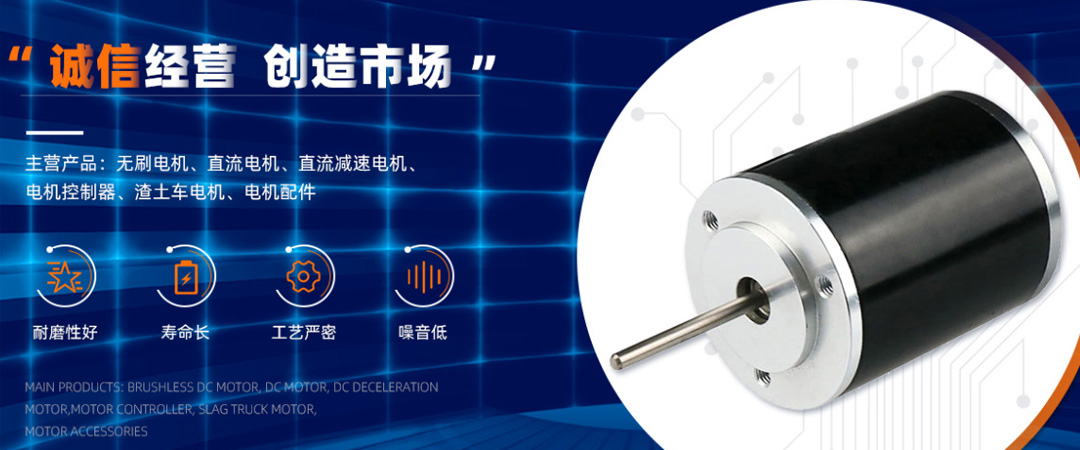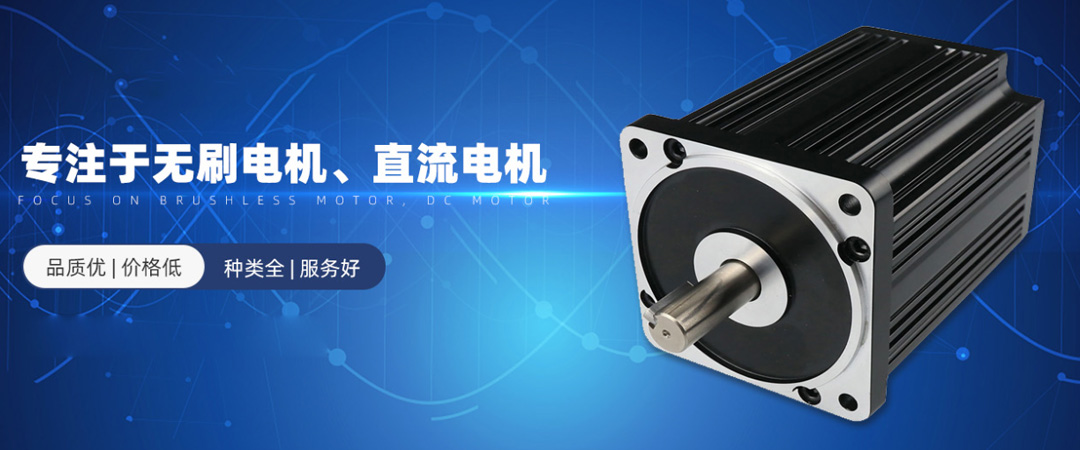Five major differences between carbon brush motors and brushless motors
In the context of rapid development, there is a significant trend in the development of many devices. Electric motors are one of them, widely used and welcomed by users. Due to the fact that both brushless motors and carbon brush motors belong to DC motors, the differences between the two are as follows:
1、 Scope of application:
Brushless motor: It is usually used in equipment with high control requirements and high speed, such as aircraft models, instruments, etc., where the motor speed control is strict and the speed reaches a very high level.
Carbon brush motor: Brush motors are commonly used in power equipment, such as hair dryers, factory motors, household range hoods, etc. In addition, series motors can also achieve high speeds, but due to the wear of carbon brushes, their service life is not as long as brushless motors.
2、 Service life:
Brushless motor: Its service life is usually in the order of tens of thousands of hours, but due to the different bearings, the service life of the equipment also varies greatly.
Carbon brush motor: The continuous working life of a brush motor is usually several hundred to over 1000 hours. When it reaches a certain level of use, the carbon brush needs to be replaced, otherwise it is easy to cause bearing wear.
3、 Usage effect:
Brushless motor: usually controlled by digital frequency conversion, with strong controllability, it can easily achieve speeds ranging from a few revolutions per minute to tens of thousands of revolutions per minute.
Carbon brush motor: Old carbon brush motors generally have a constant working speed after starting, and speed regulation is not very easy. Series excited motors can also reach 20000 revolutions per minute, but their service life is relatively short.
4、 In terms of future maintenance:
Carbon brush motors require replacement of carbon brushes, which can cause damage to the motor if not replaced in a timely manner. Brushless motors have a long service life, usually more than 10 times that of brushed motors, but if they break down, they need to be replaced, but daily maintenance is basically not necessary.
5、 The parameter indicators of the model brushless motor, in addition to external dimensions, weight, voltage range, no-load current and other parameters, also include an important indicator KV value, which is a performance parameter and an important data for judging the performance characteristics of the equipment.
By introducing the five major differences between carbon brush motors and brushless motors, and understanding the knowledge of each product, we can fully utilize the product's effectiveness. If you have any questions, please feel free to consult us.
2024.7.31 ZG
1、 Scope of application:
Brushless motor: It is usually used in equipment with high control requirements and high speed, such as aircraft models, instruments, etc., where the motor speed control is strict and the speed reaches a very high level.
Carbon brush motor: Brush motors are commonly used in power equipment, such as hair dryers, factory motors, household range hoods, etc. In addition, series motors can also achieve high speeds, but due to the wear of carbon brushes, their service life is not as long as brushless motors.
2、 Service life:
Brushless motor: Its service life is usually in the order of tens of thousands of hours, but due to the different bearings, the service life of the equipment also varies greatly.
Carbon brush motor: The continuous working life of a brush motor is usually several hundred to over 1000 hours. When it reaches a certain level of use, the carbon brush needs to be replaced, otherwise it is easy to cause bearing wear.
3、 Usage effect:
Brushless motor: usually controlled by digital frequency conversion, with strong controllability, it can easily achieve speeds ranging from a few revolutions per minute to tens of thousands of revolutions per minute.
Carbon brush motor: Old carbon brush motors generally have a constant working speed after starting, and speed regulation is not very easy. Series excited motors can also reach 20000 revolutions per minute, but their service life is relatively short.
4、 In terms of future maintenance:
Carbon brush motors require replacement of carbon brushes, which can cause damage to the motor if not replaced in a timely manner. Brushless motors have a long service life, usually more than 10 times that of brushed motors, but if they break down, they need to be replaced, but daily maintenance is basically not necessary.
5、 The parameter indicators of the model brushless motor, in addition to external dimensions, weight, voltage range, no-load current and other parameters, also include an important indicator KV value, which is a performance parameter and an important data for judging the performance characteristics of the equipment.
By introducing the five major differences between carbon brush motors and brushless motors, and understanding the knowledge of each product, we can fully utilize the product's effectiveness. If you have any questions, please feel free to consult us.
2024.7.31 ZG



